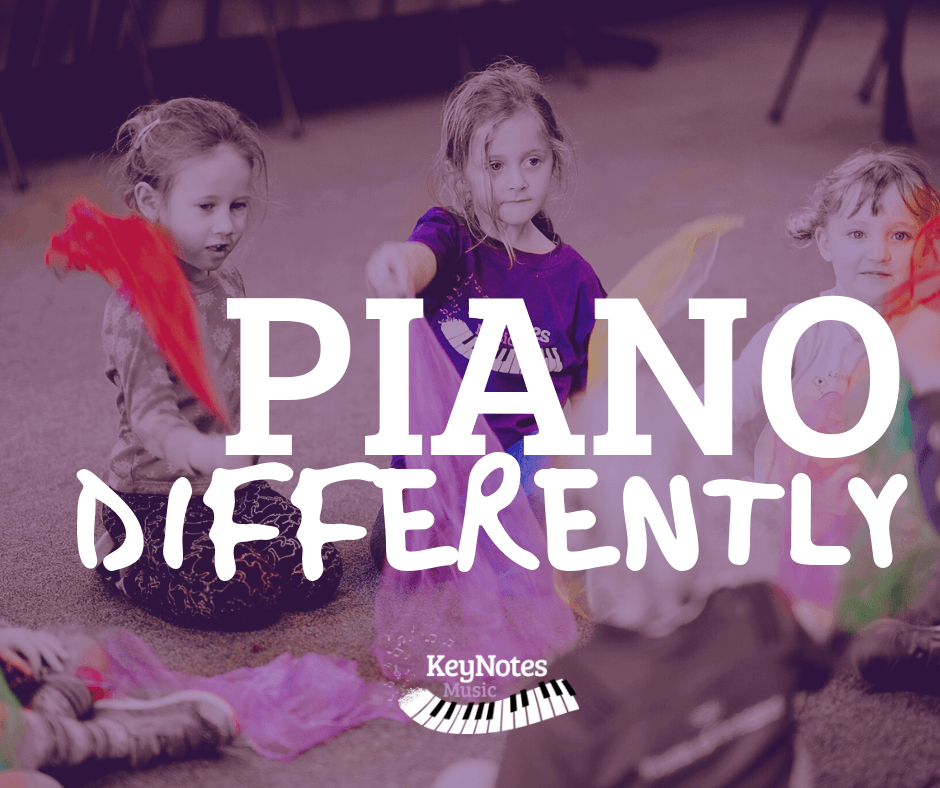Group piano benefits&why they work
Group piano & why it works

🎹 Why Group Piano Lessons Help Kids Fall in Love with Music and Learn Faster, Too!
When most parents hear “piano lessons,” they picture one child sitting quietly beside a teacher for half an hour, working through a book of scales and songs.
But today’s children learn differently and group piano lessons are transforming the way kids connect with music. 🎶
My Story
I started piano at age six in a very traditional setting , a strict teacher, an acoustic piano, and a group of nervous children waiting their turn on the sofa. We named notes, filled in theory sheets, and played endless scales and finger exercises...no songs and nothing I recognised.
To her credit, I became a great sight-reader but I’ll never forget walking out of that first lesson in tears. It wasn’t inspiring or joyful; it was intimidating.
Later, I had short one-to-one lessons at school , 10 minutes of scales, exercises, and exam prep. It wasn’t until my third teacher, a warm and creative woman who encouraged me to play songs I loved, that I truly fell in love with music. That experience inspired me to become a teacher myself.
Rethinking “Traditional” Lessons
When I began teaching in 2006, I followed what I knew: 1-to-1 lessons, method books, and exam prep. But over time, I started to question whether this was the best way for children to learn.
Too often, lessons were filled with finger numbers, note names, and Italian terms before a child had even learned to enjoy making music. Exams became the main focus, and while they can be motivating, they also caused stress, tears, and burnout.Over the years, I’ve seen too many children start off excited, only to lose that spark as the exam pressure builds. By around Grade 3, many give up entirely — not because they can’t play, but because piano has become something they have to do, not something they love to do.
Music should never feel like a chore. It should feel like magic. ✨✨✨✨✨✨✨✨✨✨✨
My Turning Point
By 2022, I had a waiting list of over 30 students and knew something had to change. I ran a small group recital for my students — they performed for one another, played games, and supported each other. The buzz in the room was incredible!
That summer, I launched my first KeyNotes Music group classes. Parents were thrilled, children thrived, and I haven’t looked back since.
Why Group Piano Works 🎵
In every other activity, swimming, dance, sports , children learn together. They learn by watching, listening, and encouraging each other. Music should be no different.
In my group piano classes for ages 6+ children enjoy 45-minute sessions filled with games, listening activities, movement, and ensemble playing. We use fun, funky backing tracks instead of a ticking metronome, and every lesson is full of creativity and energy.
For ages 4–5, we offer 30-minute group sessions — the perfect length for short attention spans while still building strong musical foundations.
Even younger children can begin their musical journey through the KeyNotes Preschool Programme (ages 3–4). Parents are welcome and encouraged to join in and learn alongside their child! Together, they explore rhythm, singing, movement, and keyboard play in a joyful, hands-on way.
Group piano allows children to start younger, stay engaged longer, and gain confidence through shared learning experiences.
“Far from being less effective, group lessons offer more variety, energy, and inspiration.”
A Proven Approach , Not a New Idea.....
Did you know that group piano isn’t new? In fact, group piano teaching began in the U.S. in the early 1900s, particularly at university level. It was developed as an efficient and effective way to train musicians, strengthen performance skills, and build musical understanding.
Today, it’s a well-established and respected model across the U.S., with many universities offering dedicated group piano programmes.
It’s time we embraced this approach here in the U.K. — with less focus on testing and grades, and more focus on creativity, collaboration, and lifelong enjoyment of music.
Breaking Away from Old Traditions
Many parents still assume that “serious” piano lessons must be 1-to-1, but that idea came from a time when teachers only had one piano!
Now, thanks to modern digital pianos and keyboards, children can learn together — listening, playing, and exploring music as a shared experience.
I’ve welcomed many students from other teachers who’ve told me their lessons felt repetitive or uninspiring. Too often, they were using dated piano books — one in particular from 1945! — that focus entirely on reading notes on the stave from page one.
Why are we still using these methods for today’s children?
Kids need engagement, imagination, and creativity. Group piano gives them that — along with teamwork, laughter, and real musical understanding.
The Joy of Shared Music
If you learned piano as a child, think back — did you really enjoy it? Did you look forward to lessons?
My goal is for children to run to the piano room, not drag their feet.
Not every child dreams of becoming a concert pianist, but every child deserves to love music. Group lessons nurture confidence, joy, and creativity — all while building the foundations for a lifetime of music-making. 🎶
Final Thoughts
After more than 20 years of teaching, I can confidently say that group piano lessons are one of the best ways for children to begin their musical journey.
They combine structure with fun, independence with teamwork, and learning with laughter.
If your child is curious about learning piano, why not let them try a class?
See how they light up when they realise music isn’t just notes on a page — it’s something to share, explore, and enjoy together. 💛



